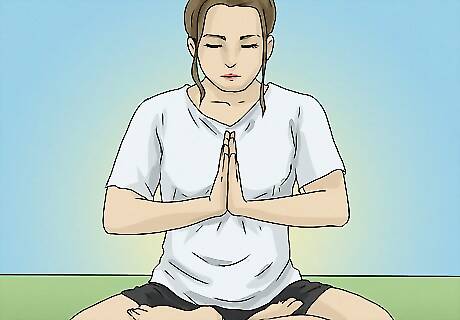
views
- Namaste is an ancient and sacred Sanskrit word that translates to “I bow to you.”
- Namaste is used to respectfully say “hello,” “goodbye,” and “thank you.”
- In Western culture, namaste closes yogic practices to honor the mind, body, and spirit.
Namaste Definition

Namaste is often used as a greeting to express appreciation and gratitude. This term is often used in spiritual practices and yoga to show respect or honor. Depending on the context, namaste can mean “hello,” “goodbye,” or “thank you.” In many Eastern cultures, it’s a polite greeting or farewell. Overall, it’s an endearing and respectful sentiment meant to display kindness. Namaste is pronounced correctly as nuh-MUH-stheh. In Sanskrit, namaste translates to “I bow to you.” The term comes from 2 Sanskrit words: namah and te. Namah means “bow,” and te means “to you.” Therefore, namaste is often said while bowing to demonstrate honor or respect to the universe, others, or self. Think of namaste as the Indian version of aloha.

In yoga, namaste is used to thank the body, mind, and spirit for all it offers. Today, namaste is also used in Western culture during yoga or spiritual practices to express love and gratitude. Some say “namaste” before and after yoga classes to greet friends and fellow yogis, while others use it as a closing chant to end their flow. No matter when it’s being used, namaste is a spiritual reminder to connect to the mind, body, and spirit, focus on the present moment, and be grateful. In Hinduism, namaste also translates to “I bow to the divine in you.” This reflects the yogic principles of peace, honor, and spirituality.
The History of Namaste

References to namaste date back to 3300 BCE. As far as we know, namaste has been a term or greeting for centuries. Excavations of Indus Valley Civilisations (which lasted from 3300 BCE to 1300 BCE) uncovered terracotta figurines or small statues in the namaste position (with their hands held in prayer).

Namaste didn’t become well-known in the West until the late 1900s. Contrary to popular belief, namaste hasn’t always been used in Western culture. Deriving from Hinduism and Sanskrit, the term gained traction as American and Indian cultures melded. Namaste became more popularly used around the 1960s and continues to be used commonly today. Some argue that the Americanized version of namaste is culturally inaccurate, insensitive, and takes away from the term’s Hindu origins.
How to Use Namaste

Say “namaste” at the end of a yoga flow to show gratitude. When you follow an online yoga practice or join an in-person class, you may notice the instructor asking you to put your hands together in prayer, bow, and say “namaste.” This is an ancient tradition used to close a yogic practice and thank the instructor, universe, and yourself for the time spent on the map. So, bow and say “namaste” at the end of each practice to honor yourself and the world around you. In yoga, the prayer hand posture is known as Anjali Mudra. This mudra is a nonverbal expression of namaste.

Say “namaste” when greeting your elders. In many Indian and South Asian cultures, namaste is a formal greeting that grants respect. Use this term to address your elders or teachers to show that you respect and honor them.

Replace a handshake with namaste. If you’re a spiritual person or follow Hinduism, try greeting people with a bow while saying “namaste” instead of shaking their hands. Some Indian countries adopted this greeting method during the 2020 pandemic to stop the spread of germs, and it just stuck!

Use namaste as a positive affirmation. Feeling a bit down lately? Help boost your self-confidence and energy by saying “namaste” to yourself in the mirror. Remember, this Sanskrit term can mean “I honor you” or “I respect you,” making it a perfect daily reminder that you’re worthy of love.




















Comments
0 comment